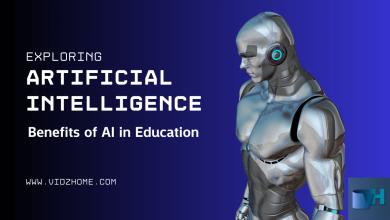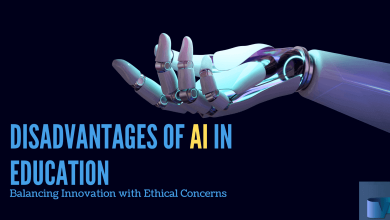
Before starting the Act wise Macbeth Summary let’s understand what it actually is.
Shakespeare’s “Macbeth” is a tragedy that unfolds in the context of the Scottish play, written during the early 17th century. Click Here to Read the Original Text for Macbeth Play.
This work, situated within Shakespeare’s extensive repertoire, delves into profound themes of ambition, power, and the repercussions of unrestrained desire.
In this article, we have prepared an Act wise Summary of Macbeth Play by Shakespeare that is further distributed into each Scene’s Macbeth Summary.
Learn How to Write a Critical Analysis in Literature
Act 1 Macbeth Summary

Act 1 Scene 1 Macbeth Summary
The play opens with an aura of mysticism as the three witches discuss their impending meeting with Macbeth.
The witches’ prophetic utterances about Macbeth’s future set the stage for the unfolding tragedy.
Macbeth Qoute from Act 1 Scene 1: “All hail, Macbeth! Hail to thee, Thane of Glamis!… Thane of Cawdor!… that shalt be king hereafter!” (Act 1, Scene 3)
Act 1 Scene 2 Macbeth Summary
Macbeth’s courage in battle is lauded by a wounded captain, emphasizing his bravery against rebels and the successful capture of the Thane of Cawdor.
Duncan’s subsequent reward of the Thane of Cawdor title foreshadows Macbeth’s ascent.
Macbeth Qoute from Act 1 Scene 2: “For brave Macbeth—well he deserves that name—disdaining fortune, with his brandished steel, which smoked with bloody execution, like valour’s minion carved out his passage.” (Act 1, Scene 2)
Act 1 Scene 3 Macbeth Summary
The witches, plotting malevolently, encounter Macbeth and Banquo, predicting Macbeth’s rise to power.
As Macbeth becomes the Thane of Cawdor, the witches’ prophecies begin to unfold, entwining fate with ambition.
Macbeth Qoute from Act 1 Scene 3: “All hail, Macbeth! That shalt be king hereafter!” (Act 1, Scene 3)
Act 1 Scene 4 Macbeth Summary
Duncan’s praises and admiration for Macbeth’s valor raise the stakes.
Duncan’s decision to visit Macbeth’s castle deepens the political intrigue, while Macbeth’s internal conflict becomes palpable.
Macbeth Qoute from Act 1 Scene 4: “O worthiest cousin! The sin of my ingratitude even now was heavy on me. Thou art so far before that swiftest wing of recompense is slow to overtake thee.” (Act 1, Scene 4)
Act 1 Scene 5 Macbeth Summary
Lady Macbeth, driven by unbridled ambition, learns of the prophecies and resolves to eliminate any hindrance to Macbeth’s ascent.
Her persuasive manipulation plants the seed of regicide in Macbeth’s mind.
Macbeth Qoute from Act 1 Scene 5: “Come, you spirits that tend on mortal thoughts, unsex me here, and fill me from the crown to the toe topful of direst cruelty!” (Act 1, Scene 5)
Act 1 Scene 6 Macbeth Summary
Duncan’s arrival at Macbeth’s castle heightens the tension.
The juxtaposition of Duncan’s trust and Macbeth’s burgeoning ambition sets the stage for the impending tragedy.
Act 1 Scene 7 Macbeth Summary
Macbeth grapples with the moral implications of regicide, showcasing a profound internal struggle.
Lady Macbeth’s persuasive prowess pushes Macbeth to overcome his hesitations and commit to the murderous plan.
Macbeth Qoute from Act 1 Scene 7: “I am settled, and bend up each corporal agent to this terrible feat.” (Act 1, Scene 7)
Marlowe’s The Tragic History of Dr Faustus Summary + Themes
Act 2 Macbeth Summary

Act 2 Scene 1 Macbeth Summary
In the aftermath of Duncan’s murder, Macbeth grapples with guilt and hallucinations.
Banquo and Fleance’s unexpected encounter, coupled with Macbeth’s reception of a diamond from Duncan, adds layers to the unfolding tragedy.
Macbeth Quote from Act 2 Scene 1: “Is this a dagger which I see before me, the handle toward my hand? Come, let me clutch thee.” (Act 2, Scene 1)
Act 2 Scene 2 Macbeth Summary
Lady Macbeth anxiously awaits Macbeth’s return, setting the stage for the consequences of their dark deed.
Macbeth, alarmed and troubled, confesses his inner turmoil.
Lady Macbeth scolds him for his perceived cowardice, and the ominous knocking at the door hints at potential discovery.
Macbeth Quote from Act 2 Scene 2: “What hands are here? Ha, they pluck out mine eyes. Will all great Neptune’s ocean wash this blood clean from my hand?” (Act 2, Scene 2)
Act 2 Scene 3 Macbeth Summary
The revelation of Duncan’s murder unfolds as the Porter opens the door to Macduff and Lennox.
Macbeth confesses to the crime, and the alarms awaken the sleeping thanes.
Duncan’s sons, fearing involvement, decide to flee to England and Ireland, further unraveling the political tapestry.
Macbeth Quote from Act 2 Scene 3: “O horror, horror, horror! Tongue nor heart cannot conceive nor name thee.” (Act 2, Scene 3)
Act 2 Scene 4 Macbeth Summary
Ross discusses unnatural occurrences in the wake of Duncan’s murder, fueling suspicions.
Macduff suggests Malcolm and Donalbain’s involvement, adding a layer of political intrigue.
Macbeth’s ascent to the throne is confirmed, and plans for his coronation are set in motion. Macduff, harboring suspicions, decides to return home to Fife.
Macbeth Quote from Act 2 Scene 4: “Thou hast it now, king, Cawdor, Glamis, all, as the weird women promised, and, I fear, thou play’dst most foully for’t.” (Act 2, Scene 4)
Oedipus Rex Themes and Critical Summary (Sophocles)
Act 3 Macbeth Summary
Act 3 Scene 1 Macbeth Summary
Banquo, suspecting foul play in Macbeth’s ascent, becomes a target. Macbeth and Lady Macbeth, hosting a banquet, reveal their fears about Banquo’s descendants posing a threat to the throne. Macbeth persuades two murderers to eliminate Banquo and his son Fleance.
Macbeth Quote from Act 3 Scene 1: “To be thus is nothing, but to be safely thus. Our fears in Banquo stick deep, and in his royalty of nature reigns that which would be feared.” (Act 3, Scene 1)
Act 3 Scene 2 Macbeth Summary
Lady Macbeth urges Macbeth to overcome his guilt, but his tormented conscience manifests in haunting dreams. Macbeth seeks the night to conceal his dark deeds, highlighting the psychological toll of his actions.
Macbeth Quote from Act 3 Scene 2: “O, full of scorpions is my mind, dear wife!” (Act 3, Scene 2)
Act 3 Scene 3 Macbeth Summary
The murderers attack Banquo and Fleance, resulting in Banquo’s death and Fleance’s escape. The murderers plan to report their actions to Macbeth, setting the stage for the consequences of Macbeth’s plot.
Macbeth Quote from Act 3 Scene 3: “Fly, good Fleance, fly, fly, fly! Thou mayst revenge. O slave!” (Act 3, Scene 3)
Act 3 Scene 4 Macbeth Summary
As guests gather for the banquet, Macbeth is informed of Banquo’s death. The ghost of Banquo appears, unsettling Macbeth, who exhibits erratic behavior. Lady Macbeth covers for him, and Macbeth resolves to seek the witches’ guidance once more.
Macbeth Quote from Act 3 Scene 4: “Avaunt! and quit my sight! let the earth hide thee! Thy bones are marrowless, thy blood is cold.” (Act 3, Scene 4)
Act 3 Scene 5 Macbeth Summary
Hecate scolds the witches for not consulting her and plans to meet them to guide Macbeth to his destiny, revealing the supernatural forces at play.
Act 3 Scene 6 Macbeth Summary
Lennox expresses suspicion about the murders of Duncan and Banquo, reflecting the growing discontent among the thanes.
Macduff, living in disgrace, seeks help in England against Macbeth, signaling the emergence of opposition.
Macbeth Quote from Act 3 Scene 6: “Those of his chamber, as it seemed, had done’t: their hands and faces were all badged with blood; so were their daggers, which, unwiped, we found upon their pillows.” (Act 3, Scene 6)
3 Critical Analysis Essay Examples (Literary Analysis)
Act 4 Macbeth Summary
Act 4 Scene 1 Macbeth Summary
The supernatural elements intensify as the witches cast a spell around a cauldron. Hecate congratulates them, setting the stage for Macbeth’s visit.
The three apparitions reveal prophecies, forewarning Macbeth about Macduff and assuring his invincibility.
However, fears about Banquo’s descendants sow paranoia, leading Macbeth to vow revenge on Macduff’s family.
Macbeth Quote from Act 4 Scene 1: “Beware Macduff; Beware the Thane of Fife… Macbeth shall never vanquished be until Great Birnam Wood to high Dunsinane Hill shall come against him.” (Act 4, Scene 1)
Act 4 Scene 2 Macbeth Summary
Lady Macduff, worried about Macduff’s departure, receives reassurance from Ross, who conceals the full truth.
Lady Macduff falsely informs her son of Macduff’s death, culminating in their tragic demise at the hands of murderers seeking Macduff.
Macbeth Quote from Act 4 Scene 1: “He has killed me, mother. Run away, I pray you!” (Act 4, Scene 2)
Act 4 Scene 3 Macbeth Summary
Macduff shares the suffering in Scotland with Malcolm, who tests Macduff’s loyalty by claiming he would be a worse king than Macbeth.
Macduff initially excuses Malcolm’s flaws until Malcolm’s claim to bring chaos prompts the revelation of his true intentions.
The scene concludes with Ross informing Macduff of his wife’s and children’s tragic fate, leading to Malcolm’s offer of comfort and a plan for revenge against Macbeth.
Macbeth Quote from Act 4 Scene 1: “All my pretty ones? Did you say all? O hell-kite! All? What, all my pretty chickens and their dam at one fell swoop?” (Act 4, Scene 3)
Aeschylus Prometheus Bound Summary, Themes(Critical Aspect)
Act 5 Macbeth Summary
Act 5 Scene 1 Macbeth Summary
The tragic unraveling begins as the Doctor and Gentlewoman observe Lady Macbeth sleepwalking.
Desperate to cleanse herself of guilt, Lady Macbeth attempts to wash away an imagined “damned spot” and speaks of past murders, revealing the haunting toll on her psyche.
Macbeth Quote from Act 5 Scene 1: “Out, damned spot! Out, I say!” (Act 5, Scene 1)
Act 5 Scene 2 Macbeth Summary
The tension escalates as the Thanes discuss the approaching English forces led by Malcolm, Siward, and Macduff.
Macbeth faces internal dissent among his own men in Dunsinane, and the English forces, having cut boughs from Birnam Wood for camouflage, begin their march towards the castle.
Macbeth Quote from Act 5 Scene 2: “Let every soldier hew him down a bough and bear’t before him.” (Act 5, Scene 2)
Act 5 Scene 3 Macbeth Summary
Macbeth dismisses reports of the approaching army, relying on the witches’ prophecies.
However, his declining mental state becomes apparent as he grapples with internal turmoil.
The doctor conveys his inability to help Lady Macbeth’s disturbed mind, highlighting the psychological toll.
Macbeth Quote from Act 5 Scene 3: “Out, out, brief candle! Life’s but a walking shadow, a poor player that struts and frets his hour upon the stage.” (Act 5, Scene 3)
Act 5 Scene 4 Macbeth Summary
The Scottish lords gather with Malcolm, Macduff, and their army, preparing for the impending battle.
Cutting down boughs from Birnam Wood for camouflage, they strategize against Macbeth.
Act 5 Scene 5 Macbeth Summary
Macbeth reflects on his lack of fear and the perceived meaninglessness of life.
Seyton reports Lady Macbeth’s death, and Macbeth learns that Birnam Wood appears to be moving towards Dunsinane, marking the literal fulfillment of the witches’ prophecy.
Macbeth Quote from Act 5 Scene 5: “She should have died hereafter; there would have been a time for such a word.” (Act 5, Scene 5)
Act 5 Scene 6 Macbeth Summary
Malcolm’s army arrives outside the castle, discarding their camouflaging branches to reveal themselves.
Malcolm discusses the battle plan against Macbeth, setting the stage for the final confrontation.
Act 5 Scene 7 Macbeth Summary
Macbeth remains defiant, and confident in the witches’ prophecy. Young Siward challenges him and meets his demise, while Macduff, seeking vengeance, enters the castle along with Malcolm and Siward.
How to Find the Real Purpose of Life?
Act 5 Scene 8 Macbeth Summary
Macduff confronts Macbeth in a fatal battle, revealing his unique birth circumstances as he was “untimely ripped” from his mother’s womb.
Macbeth is killed, fulfilling the witches’ prophecy and bringing about his tragic end.
Macbeth Quote from Act 5 Scene 8: “Macduff was from his mother’s womb untimely ripped.” (Act 5, Scene 8)
Act 5 Scene 9 Macbeth Summary
Malcolm expresses concern for Macduff and Young Siward, while Ross informs Siward of his son’s death. Macduff arrives with Macbeth’s head, hails Malcolm as the new king, and invites them to witness his coronation, marking the resolution of the tragic events.
Macbeth Quote from Act 5 Scene 9: “Hail, King! For so thou art.” (Act 5, Scene 9)



